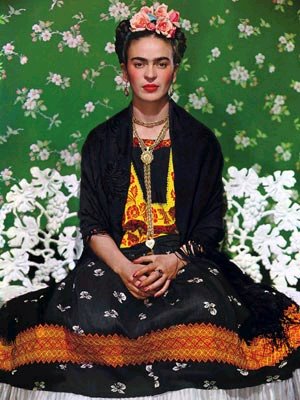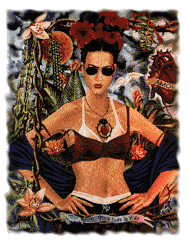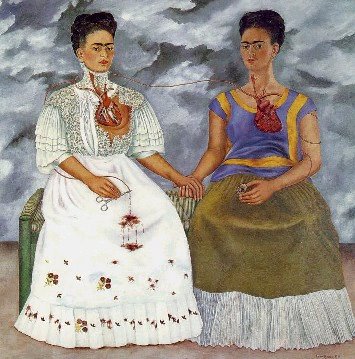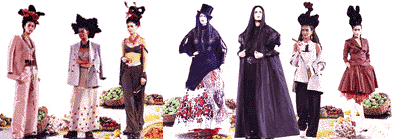Issues concerning human rights violations have never been taken seriously by the masses, that's the reason why state violence such as extra judicial killings, police brutality keep on happening in our country and other countries cos none of us stands up to say to the authorities that this is wrong. Don't ever underestimate our voices. Give our voices to those whose voices have been silenced. Together we can have our voices heard loud and clear that we don't want this. Human right violations can never be compromised cos if it can happen to other people,it can happen to you and me too.
Please sign the online petition to stop the extra-judicial killings of peasant leaders and activists in the
Philippines:
http://www.foodsov.org/html/takeaction04.htm
Sunday, September 24, 2006
Saturday, September 09, 2006
Fucking pesticides
Pesticide has become a major threat to our environment and the lives of people whose lives very much rely on natural sources such as the river. I guess you must have read news about the aborigine children who died in places like Cameron Highlands (where I used to live) where the river has been permeated by pesticide. This is a major issue that many people have ignored cos it seems that only the lives of marginalized people are affected. Wait a minutes, how sure are you that the water that we drink everyday are actually 'clean'.
The threats of environmental issue as such have always been underestimated. Believe me, none of us can afford the consequences. Below is a report released by Pesticide Action Network and The Asia Pacific about how pesticides kill people in India. Please spend your precious time reading it and then contemplating about what you can do as individual to make a difference.
Industry urged to pull dangerous pesticides from Indian market
As Indian regulators, media and the public debate about a report on
excessive levels of pesticide residues in Coke and Pepsi amongst other
soft drinks, attention is not being paid to the real problem that is
killing scores of Indians each year - that of deadly pesticides being used
in agriculture on a variety of crops. Poverty stricken Indians are
paying a heavy price for the use of pesticides in farming. Therefore the
India-based Centre for Sustainable Agriculture, Pesticide Action Network
(PAN) Asia and the Pacific, and the German Coalition against Bayer
Dangers urge pesticide producers to withdraw all highly toxic pesticides
from the Indian market.
Kavitha Kuruganti from the Centre for Sustainable Agriculture (CSA):
"Many of these extremely dangerous pesticides are products of
multinational companies like Bayer, DuPont and Syngenta which have stopped
producing and marketing such pesticides in the developed world long ago.
However, they maintain double standards on people in India. Here, they
produce and market these pesticides aggressively." The CSA has documented
dozens of cases of poisonings, many of them fatal. "For instance Bayerดs
pesticide Hinosan (active ingredient: Edifenfos) is involved in such
poisonings we documented", continues Kuruganti.
"PAN AP in collaboration with partners in India and other countries in
Asia, have documented how Class I pesticides, as well as those
erroneously considered 'less harmful' such as endosulfan and paraquat (Class
II) continue to poison millions of workers and farmers across Asia!",
asserts PAN AP's Executive Director, Sarojeni V. Rengam. "It is an
unmitigated tragedy that Class I pesticides, as well as paraquat and
endosulfan-which are extremely hazardous under conditions of use in the
South-are still so widely used. We call on the world's largest producers of
endosulfan, which is Bayer; and paraquat, namely Syngenta, to stop
production of these deadly pesticides immediately!"
Bayer CropScience is the market leader for pesticides in India. In many
parts of the world the company sells pesticides in WHO Class Ia
(extremely hazardous) and I b (highly hazardous) like Thiodicarb, Disulfoton,
Parathion, Fenamiphos, Azinphos-methyl, Methamidophos and Oxydemeton
Methyl. Philipp Mimkes from the Coalition against Bayer Dangers which has
been monitoring the corporation for more than 25 years: "In 1996 Bayer
promised to replace all WHO Class I pesticides with products of less
toxicity. The company evidently failed to keep its promise. Bayer
products containing these extremely dangerous ingredients are still on the
market. As a result thousands of agricultural workers across the world are
poisoned year after year."
In a statement issued by Bayer in Germany, the company acknowledged
that it sells Class I product Hostathion (ingredient: Triazophos) in
addition to Thiodan (Endosulfan) in India. However Bayerดs Indian website
lists several more Class I substances like Larvin (Thiodicarb),
Metasystox (Oxidemeton Methyl), Tamaron (Methamidophos) and Folidol (Parathion
Methyl).
The Centre for Sustainable Agriculture, PAN Asia and the Pacific and
the Coalition against Bayer Dangers state that a safe use of pesticides
is not possible in India specifically, and the South in general, because
of poverty, illiteracy and other social conditions as well as tropical
climatic conditions which do not permit the wearing of protective gear,
or institute other protective measures. The groups criticise the
industry's marketing strategies which give pesticides an image of being
"safe". They also recall the FAO code of conduct, to which India is a
signatory and which has also been endorsed by the pesticides industry, which
recommends that Class I and Class II pesticides should not be used in
developing countries.
Having initiated a large programme of Non Pesticidal Management of
crops successfully with farmers in over 180 thousand acres in the state of
Andhra Pradesh, Centre for Sustainable Agriculture questions the need
for pesticides in agriculture. Therefore the Indian government is urged
to ban aggressive marketing of pesticides, to express the
acknowledgement that these products are essentially poisons and to ensure that the
industry is made liable for their products, including compensation,
medical care and economic rehabilitation for all victims.
For more info, kindly log on to :www.panap.net
The threats of environmental issue as such have always been underestimated. Believe me, none of us can afford the consequences. Below is a report released by Pesticide Action Network and The Asia Pacific about how pesticides kill people in India. Please spend your precious time reading it and then contemplating about what you can do as individual to make a difference.
Industry urged to pull dangerous pesticides from Indian market
As Indian regulators, media and the public debate about a report on
excessive levels of pesticide residues in Coke and Pepsi amongst other
soft drinks, attention is not being paid to the real problem that is
killing scores of Indians each year - that of deadly pesticides being used
in agriculture on a variety of crops. Poverty stricken Indians are
paying a heavy price for the use of pesticides in farming. Therefore the
India-based Centre for Sustainable Agriculture, Pesticide Action Network
(PAN) Asia and the Pacific, and the German Coalition against Bayer
Dangers urge pesticide producers to withdraw all highly toxic pesticides
from the Indian market.
Kavitha Kuruganti from the Centre for Sustainable Agriculture (CSA):
"Many of these extremely dangerous pesticides are products of
multinational companies like Bayer, DuPont and Syngenta which have stopped
producing and marketing such pesticides in the developed world long ago.
However, they maintain double standards on people in India. Here, they
produce and market these pesticides aggressively." The CSA has documented
dozens of cases of poisonings, many of them fatal. "For instance Bayerดs
pesticide Hinosan (active ingredient: Edifenfos) is involved in such
poisonings we documented", continues Kuruganti.
"PAN AP in collaboration with partners in India and other countries in
Asia, have documented how Class I pesticides, as well as those
erroneously considered 'less harmful' such as endosulfan and paraquat (Class
II) continue to poison millions of workers and farmers across Asia!",
asserts PAN AP's Executive Director, Sarojeni V. Rengam. "It is an
unmitigated tragedy that Class I pesticides, as well as paraquat and
endosulfan-which are extremely hazardous under conditions of use in the
South-are still so widely used. We call on the world's largest producers of
endosulfan, which is Bayer; and paraquat, namely Syngenta, to stop
production of these deadly pesticides immediately!"
Bayer CropScience is the market leader for pesticides in India. In many
parts of the world the company sells pesticides in WHO Class Ia
(extremely hazardous) and I b (highly hazardous) like Thiodicarb, Disulfoton,
Parathion, Fenamiphos, Azinphos-methyl, Methamidophos and Oxydemeton
Methyl. Philipp Mimkes from the Coalition against Bayer Dangers which has
been monitoring the corporation for more than 25 years: "In 1996 Bayer
promised to replace all WHO Class I pesticides with products of less
toxicity. The company evidently failed to keep its promise. Bayer
products containing these extremely dangerous ingredients are still on the
market. As a result thousands of agricultural workers across the world are
poisoned year after year."
In a statement issued by Bayer in Germany, the company acknowledged
that it sells Class I product Hostathion (ingredient: Triazophos) in
addition to Thiodan (Endosulfan) in India. However Bayerดs Indian website
lists several more Class I substances like Larvin (Thiodicarb),
Metasystox (Oxidemeton Methyl), Tamaron (Methamidophos) and Folidol (Parathion
Methyl).
The Centre for Sustainable Agriculture, PAN Asia and the Pacific and
the Coalition against Bayer Dangers state that a safe use of pesticides
is not possible in India specifically, and the South in general, because
of poverty, illiteracy and other social conditions as well as tropical
climatic conditions which do not permit the wearing of protective gear,
or institute other protective measures. The groups criticise the
industry's marketing strategies which give pesticides an image of being
"safe". They also recall the FAO code of conduct, to which India is a
signatory and which has also been endorsed by the pesticides industry, which
recommends that Class I and Class II pesticides should not be used in
developing countries.
Having initiated a large programme of Non Pesticidal Management of
crops successfully with farmers in over 180 thousand acres in the state of
Andhra Pradesh, Centre for Sustainable Agriculture questions the need
for pesticides in agriculture. Therefore the Indian government is urged
to ban aggressive marketing of pesticides, to express the
acknowledgement that these products are essentially poisons and to ensure that the
industry is made liable for their products, including compensation,
medical care and economic rehabilitation for all victims.
For more info, kindly log on to :www.panap.net
Monday, September 04, 2006
Frida Kahlo
 Frida Kahlo
Frida Kahlo This is John Paul Gaultier's version of Frida
This is John Paul Gaultier's version of FridaFrida Kahlo is a Mexican painter, born on July 6, 1907 and passed away on July 13, 1954.
Her life had always been scarred by physical suffering and emotional suffering. She was contracted with polio when she was five. In 1925, a bus accident caused severe injuries to her when a pole pierced her from the stomach to the pelvis. Consequently, she had to go through 32 surgical operations throughout her life and had her body confined by corsets of different kinds and mechanical "stretching" systems.

Lots of her paintings were done laying in bed. Her condition deprived her of having children but she insisted to give it a try. She managed to conceive but eventually went through miscarriage.

In the movie called Frida, I watched Frida (Salma Hayak)making a painting of the fetus kept in a bottle while lying in the hospital bed with so much sorrow. I remember I wept madly watching that particular scene.

Fashion inspired by Frida designed by John Paul Gaultier
Through out the decades, Frida 's life has continued to inspire and move many people in every possible way. Her intensed, passionate yet heart-breaking relationship with Diego Rivera, a painter had made a great impact in her as a painter and as a person. Diego, an womannising husband who even slept with Frida's sister had indirectly led to her affairs with both man and women in order to escape from such excruciating despair. Of course,in the end she forgave Diego and her own sister, after all, that is what love is all about, being forgiving. She is also famed for her active involvements in the Mexican Revolution. Many of her disturbing paintings project a sense of misery. She is the very artist who coloured suffering with a life of its own.
Saturday, September 02, 2006
Vivienne Westwood Exhibition

I have always been so fascinated by fashion since I was a young girl. I remember I used to sit alone in the living room watching Fashion File or Video Fashion on T.V. Then, I would learn to pronounce and write the name of my favourite fashion designer's name, Vivienne Westwood correctly while everyone else was still pretty much clueless about who Vivienne Westwood is.
I watched many fashion shows on T.V but it was always her fashion shows that blew my mind away. Who can ever forget Naomi Campbell in a pair of 10-inch blue platform shoes catwalking at Vivienne Westwood's fashion show in 1993, then without everyone's expectation, she fell to her feet. At that moment, the fashion world watched her struggling to get on her feet again.
That incident didn't ruin neither the career of Naomi Campbell or Vivienne Westwood. In fact, it became the most remembered fashion show and the most glam catwalk accident ever documented. That is Vivienne Westwood for you, her fashion has always been so theatrical, dramatic and madly rebelous to the extent of being a bit too much to be stomached even by the most seasoned fashion critics.

Recently, an acquantance who used to work as a art director for a French publishing company which publishes magazines such as Elle France, told me that Vivienne Westwood's exhibition has been creating a life of its own at Thailand Creative and Design Center since 22 July and the exhibition will last until 27 Sept. 2006. The next thing I did was to make my way to the 6th floor of The Emporium shopping mall in Bangkok, where the exhibition has been taking place. After all, how often do we get to see her creations as close as the air we breathe?

I blithely walked into the heart of darkness where I heard Sex Pistols' song blasting out of the speaker near to the entrance. Her creations are displayed in chronological order with the very first collection of punk fashion created in 1971, which were sold at a shop called Let It Rock at 430 King's Road in London.

The mannequin on display is donned with Venus T-shirt and leather skirt elaborated with mockcroc, chains, zips, metal studs, rubber and even horse hair. There is a polished black board illuminated by dim spot light. On the black board is a description goes like this: Vivienne Westwood met Malcolm Mcleren in 1965, and their son Joseph Ferdinand Corre was born the following year. Their working relationship, which lasted from 1970 until 1983, launched Punk. Vivienne recalled, 'I felt there were so many doors to open, and he had the keys to all of them. Plus, he had a political attitude and I needed to align myself.'

As I moved forward a few steps to the right, what appeared before my eyes was a mannequin clad in a a T-shirt screen printed with a torn Jack Union flag on it. This infamous T-shirt was designed by Malcom Mclaren and Jamie Reid. It was worn by Sex Pistols' Johnny Rotton for the Sex Pistols' single called Anarchy in the U.K in 1976.

Of course, Vivienne Westwood is not just the inventor of Punk fashion, she is simply a natural born fashion revolutionary. Who else has the gut to convert Victorian crinolines into sexy yet childish mini-skirts and corsets into stylish outerwear if not Vivienne Westwood?
Inside the exhibition hall, there is a big screen constantly showing Vivienne Westwood's fashion shows, where models playfully catwalking down the fashion runway with attitude of celebration. Many of the clothes shown at the fashion shows are on display at the exhibition.

No doubt, I am a Vivienne Westwood's fan. Having said that, I still find it to be a bit outrageous just to visualize myself wearing the Lycra tights with fig leaf attached to the private area just like Adam and Eve. The trousers is called 'Man with No Trousers'. In fact, when she first did the fig leaf in 1989, she just kept screaming cos it was so porno and hilarously mad. Then, she got used to it and thought it looked so elegant.
As I scrutinized the Harris Tweed Jacket and the fig leaf tights worn by a headless mannequin, I just couldn't help myself but to laugh out loud. Vivienne Westwood has always stayed true to English tailoring especially traditional techniques as a starting point. At the exhibition, you can see some of the suits are so perfectly moulded to the bodies of the mannequins like second skin.
Of course, not to be missed are the 10-inch platform shoes on diaplay in the glass cases. For me, it was just so incredible to be there to marvel at the blue platform shoes that created fashion history of its own. I was there jotting down the details of some creations which I really adore until my pen went dried of ink that I had to borrow a pen from the security guard who was so smartly dressed in black suit. Of course, I was so fashionably dressed in a military dress that looks quite Vivienne Westwood. After all, I am a fashion writer or wannabe?!!
After spending more than an hour inside the exhibition hall, I decided to leave or else, I would start to plot a robbery. Yes, it did cross my mind. So, outside the exhibition hall, I was given a booklet of the exhibition. In the first page of the booklet are some inspiring words goes like this: 'Some people adapt themselves to the world, while others adapt the world to themselves. The world goes round because of the latter group'. After reading it, I smiled to myself cos I know I belong to the later group. Then, I signed the guest book with coloured pencils provided there. Thanks to Thailand Creative and Design Center for putting together such a great exhibition.
Subscribe to:
Posts (Atom)


